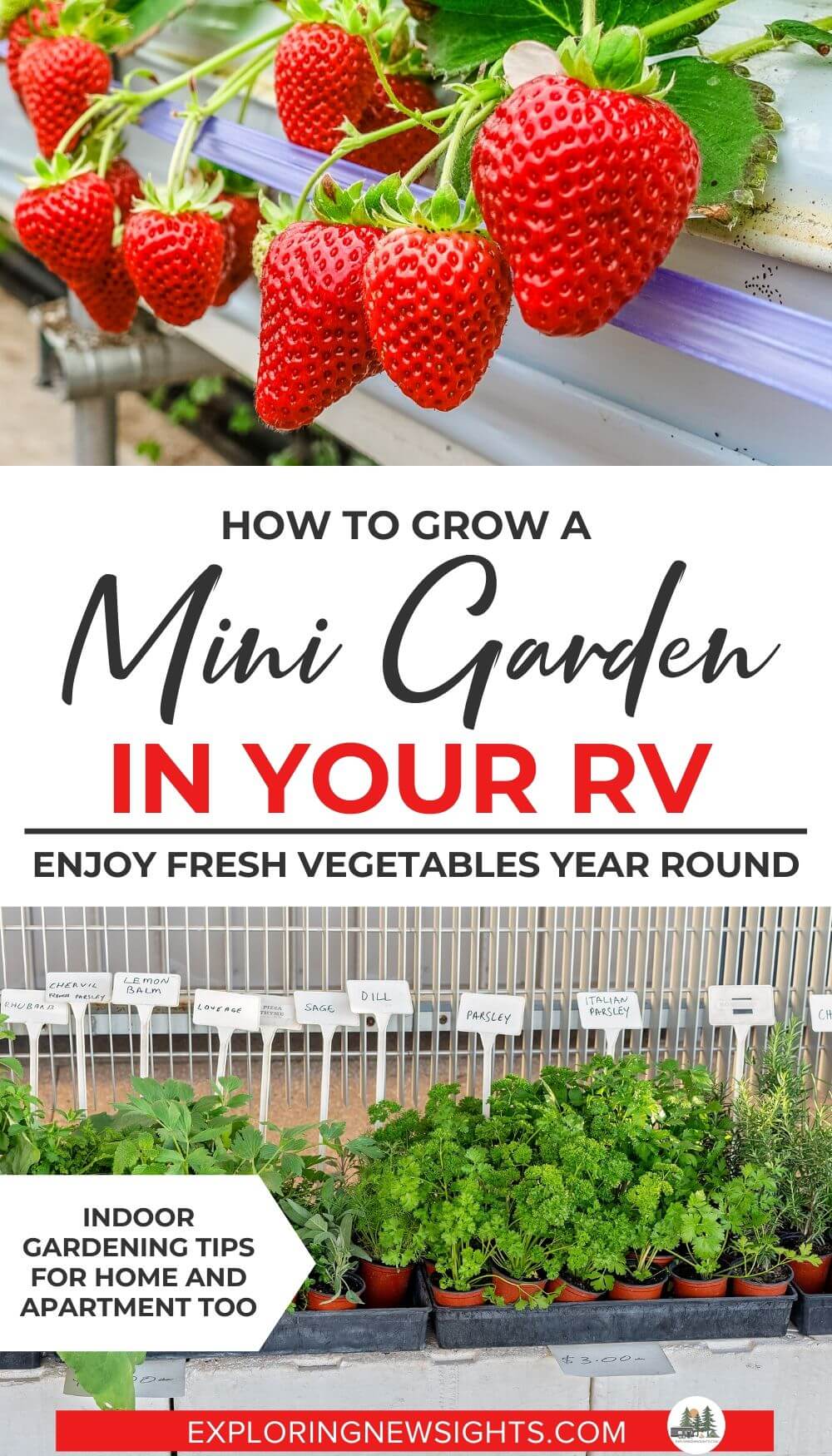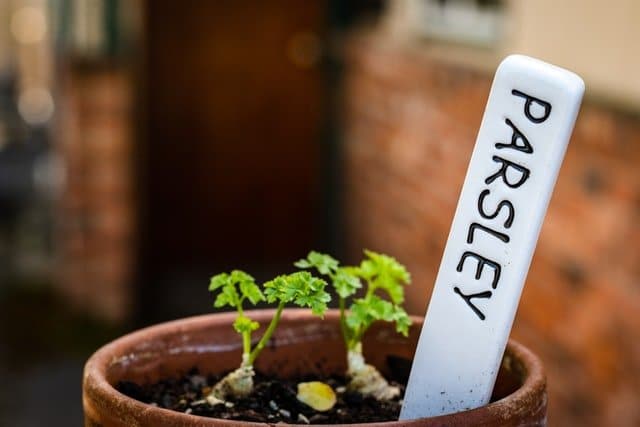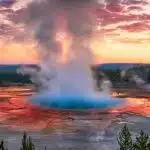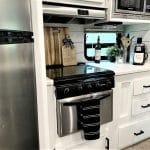
How to Grow a Mini Garden Inside Your RV Camper
How to grow a mini-garden in your RV Camper | With the decline of quality produce found in grocery stores these days, it is no wonder that the topic of gardening and becoming self sufficient is on the rise, even among us RV “full-timers”!
I don’t know about you, but tomatoes and strawberries recently have lost their sweetness and flavor.
With mass production that is aimed at quantity, not quality, chemical fertilizers, and the use of unnatural pesticides, our food is becoming like plastic. Ok, that might be a little dramatic, but in all seriousness, what is happening to our produce?

With all of the readily available information out there about the harm and danger of eating pesticide-laden foods, one would think they would stop using these chemical pesticides and fertilizers!
There are natural pesticides and organic fertilizers that could be taken advantage of, but they aren’t. Shouldn’t organic food be the norm and not the minority?
We don’t need to inject our produce with unnatural things to preserve them or make them grow to crazy large scales, but yet these mass food producers are. And with so few organic farms out there, the prices are more expensive.
The reason is as simple as supply and demand. There is less produce grown organically compared to the demand of the product, therefore, the prices are higher than mass-produced non-organic options.
I’m sure these large scale food producers have explanations to these questions and concerns but are they satisfying answers? Are they enough for you to keep eating the flavorless fruit and vegetables?
Since buying organic is more expensive, what is an alternative? How can we save money and still eat foods that we can feel good about?
Simple! Start growing your own food!
But, if you’re living in an RV, tiny home, or even an apartment… how can you grow your own produce?
Well with today’s technology and a little knowledge of what each plant needs, I think it’s more doable now more than ever!
You can start your very own indoor/outdoor mobile garden!
If you would like to start learning how to garden check out my sister in law’s Youtube Channel “Life on our Micro Farm”! She’s been gardening for years now! Show her some support and subscribe to her channel! 😊
But before you check it out (I will provide another link at the end), here are some tips on how you can start your own mobile indoor/outdoor garden today, plus a list of plants you can start growing indoors.
What does organic mean?
First, let’s describe what it means when something is ‘organic’.
According to USDA.gov, Organic produce is grown in soil that has not been contaminated with any synthetic fertilizers or chemical pesticides.
That is not to say they have never had any type of fertilizer or pesticide but the types that have been used on them are organic and approved for organic gardening.
I don’t know about you, but I would rather have my produce grown organically.
Benefits of growing your own produce indoors
Now that we know what “organic” means, lets dive into the benefits of growing your own produce rather than buying from the store.
- The number one benefit is it will save you money! If you’re someone who enjoys eating salads (Like Me), then growing your own lettuce year-round is a money saver!
- The number two reason for growing your own produce is because you will have fresh food year round. You don’t have to worry about your lettuce wilting because it will be continuously growing. We will talk more about growing lettuce later.
- The number three reason to grow your own produce is you will have control over the kind of soil, pesticides, or any chemicals placed on your plants. When you’re growing inside, you actually don’t have to use any kind of pesticides or chemicals.
These sound like three amazing reasons to start your very own indoor mini garden.
What you will need to grow your produce indoors
Growing plants do require some special soil and planters.
- Organic Indoor Soil (Check each type of plant you choose for what is best)
- Planters or wall planters that have good drainage capabilities
- A self grower with fluorescent lights (Optional depending on the amount of sunlight you get inside)
- Non-GMO/Organic Germinated Seeds
- Spray bottle for watering
Ways to Grow a Mini Garden inside your RV Camper or Apartment
- Purchase an indoor grower with fluorescent lights or a hydroponics system. This will allow you to have very minimal upkeep and give you the ability to place your plants anywhere in your home or RV.
- If not using grow lights, position your plants per their sunlight requirement in the windows of your RV or apartment. Our Dining table sits where we get the morning sun perfectly. Any plants that need that morning sun will do perfectly by sitting on our table. Some plants don’t require a lot of sun exposure and can be hung on the walls in planters.
Before you start planting your Mini Garden…
Before you start planting, you really need to figure out what type of vegetables and fruits you will eat. There is no sense in planting spinach if you never eat spinach.
Living in an RV means being purposeful with space, so growing what is eaten regularly is key.
Types of Plants and Indoor Growing Tips

Mini-Garden Herbs
Cilantro
Cilantro is a herb that is commonly used in Hispanic and Asian Cuisine. If you love making salsa or tacos, for example, then having fresh cilantro growing is beneficial.
- Soil: Mix of Indoor planting soil and sand for drainage.
- Pot: 8 inches deep is recommended because cilantro develops a deep taproot like carrots.
- Light: Full sun 4 to 5 hours a day preferably morning sun.
- Water: Cilantro needs to be watered thoroughly with water draining out. When grown indoors, it needs to be watered when the soil is dry to touch.
You can learn more about how to grow cilantro here.
Rosemary
Rosemary is one of my favorite herbs to cook with. I love adding good garlic and rosemary to my chicken or steak. The flavor is just delicious!
- Soil: Two parts sterilized potting soil and one part sand
- Pot: 3.5 inches in diameter and depth
- Light: Minimum of 6 hours of direct sunlight
- Water: Thoroughly water but do not allow the soil to become soggy. 2 inches on top of the soil can be dry and rosemary will thrive.
To learn more about how to plant and care for rosemary, click here.
Parsley
Parsely is another great herb to grow indoors and is used is a variety of dishes. I like to top my eggs with a little bit of parsley in the mornings.
- Soil: Same as other herbs. Good Indoor soil with easy drainage capabilities.
- Pot: Needs a pot with good drainage
- Light: 6 to 8 hours of direct south sunlight (if possible).
- Water: Regularly water to keep the soil moist but not soggy and don’t let the soil sit-in water.
If you would like to know more on growing parsley indoors, click here.

Basil
Basil is a very popular herb that is used in a variety of dishes. Italian dishes are the most popular cuisine that you will use basil.
- Soil: Nutrient-rich soil that’s easy for water to drain through
- Pot: Choose a pot with good drainage.
- Light: 6 hours of sunlight to grow properly. If using fluorescent lights, it needs 10-12 hours a day.
- Water: Keep basil hydrated. Usually, twice a week is a good amount of watering
You can learn more about how to plant and care for basil indoors here.
Mint
Mint is an easy herb to plant and is low-maintenance. You can use mint in a variety of foods and drinks including ice cream or mint juleps.
- Soil: Indoor soil is perfect but doesn’t pack the soil because mint needs the soil to drain easily.
- Pot: Choose a wide pot for better results with drainage holes
- Light: Morning sun and partial afternoon light are key.
- Water: Every 2 to 3 days. Keep the soil moist
If you would like to know how to plant and keep a mint herb thriving, you can learn more here.
Mini-Garden Vegetables
lettuce
If you love making salads as I do, then having fresh lettuce growing year-round is so beneficial. Here are some quick tips to grow your own indoors.
- Soil: Indoor Seed Starting Soil
- Pot: Choose a post size that is 4 to 6 inches both width and depth
- Light: Direct Sunlight or Fluorescent light
- Water: Water when the lettuce wilts. Do not overwater or let soil soak.
If you’d like to learn more about how you can start growing lettuce, check it out here.
Kale
Kale is a great choice to grow alongside your lettuce. Many people like to grow these types of vegetables in hydroponic systems because they make caring for lettuce, kale, and tomatoes much easier.
- Soil: Indoor growing mixture
- Pot: Good Drainage with 12 inches deep and wide preferably for growth
- Light: Needs 4 hours of sunlight or 6 under florescent
- Water: Needs just enough water to moisten the soil. Do not water Log the plant
You can check out more details on how to start a seedling and grow kale indoors here.

Spinach
Just another salad green that is so good for you! This plant is a great one to plant in the hydroponic system too.
- Soil: Quality organic indoor potting mix
- Pot: 6-8 inches deep and wide or you can use smaller pots for each seed
- Light: Doesn’t need much light and enjoys the morning sun
- Water: Keep the soil moist but never soggy. Overwatering can lead to fungus
Learn how to grow spinach indoors in a pot from a seedling here.
Tomatoes
I LOVE Tomatoes! Having fresh homegrown tomatoes year round sounds amazing! Plus, there are so many different types of tomatoes you can choose from like grape tomatoes.
- Soil: Good Quality organic soil and fertlize every week.
- Pot: At least 12 inches deep
- Light: Requires a lot of light. If you don’t get a lot of light in a window, then this is the plant to use in the hydronic system.
- Water: Maintain a moisture soil base
To learn more about growing tomatoes indoors, check out more here.

Radishes
Perfect for RV’s or Tiny living because they are a no fuss kind of vegetable. They usually take 21-23 days to grow until harvest. Radishes are perfect for salads.
- Soil: Any organic indoor potting soil
- Pot: 6 inches deep with great drainage to prevent root rot
- Light: Needs a lot of light 6 – 8 hours a day preferably
- Water: Don’t let them dry out. Water often and keep the soil moist, not soggy.
To learn more about growing radishes click here.
Mini-Garden Fruit

Strawberries
Strawberries are amazing to eat organically and even better when you grow them yourself. The Alpine Strawberry plant is the best suited for indoor growth. They usually flower and produce twice a year, so although it may not be a constant access to strawberries, it’s wonderful to have fresh strawberries in season.
- Soil: Indoor Organic soil mix
- Pot: They have a shallow root system, so Strawberries can be planted in any pot of choice with good drainage.
- Light: 4-6 hours per day
- Water: Daily during growing seaso. They love waer but not too much. Don’t over water and cause the soil to become soggy.
To learn more about growing strawberries indoors as a houseplant, click here.
Final Thoughts
Growing a mini garden inside your RV, Tiny home, or Apartment is definitely doable! To have fresh greens growing year-round to enjoy will not only benefit your health but also pocketbook.
I hope this has inspired you to grow a mini garden. Even if it’s just a few herbs or plants inside a hydroponic system, that’s alone is amazing!
If you want to learn more about starting your own garden, don’t forget to check out my sister-in-laws Youtube channel called “Life on our Micro Farm“! Follow, Subscribe and comment/like her videos (See I told you I would give you another link 🙂 )
Enjoyed this post? Pin it for later!













